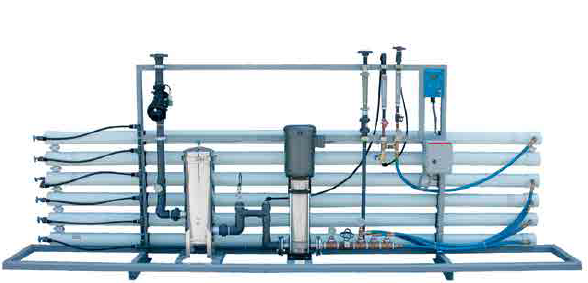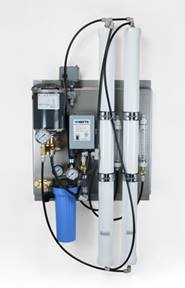
What is Whole House Reverse Osmosis Water Filtration System?
A whole house reverse osmosis system (Point-of-entry, POE) provides the best water quality to every faucet in a home. Reverse osmosis is a mechanical filtration method that is used to remove impurities and the ionic level and other molecules from water. This method utilizes pressure to force a solution through a semipermeable membrane. Larger molecules are rejected resulting in the highest quality water entering your home. Keep in mind, a whole house RO is far more than just a reverse osmosis system. It is complete system which may include pretreatment, a reverse osmosis system, post treatment, sanitation, and finally water storage with a booster pump.
Generally, a whole house reverse osmosis system is positioned at the entry point of pipe that supplies water to your home. The RO system itself is comprised of a booster pump, pre-filter, vessel(s) that contain the reverse osmosis membrane(s), solenoids, and a control panel. The reverse osmosis membrane is made of tightly wound sheets containing small microscopic pores. These small openings reject approximately 98% of the dissolved inorganic and organic matter and is responsible for its high filtration capability. This makes it capable of filtering contaminants like copper, chromium, uranium, boron, arsenic, lead, silver, nitrates, and sodium. Although many of these metals are beneficial for human body, when in excess they can cause severe harm. There are very few filtration techniques as efficient as a RO system that can eliminate these ions completely. Owing to its high purification capabilities, whole home reverse osmosis systems are becoming a favored choice over distillation and deionization techniques for water purification.
POE or whole house water osmosis systems (700 GPD to 3,600 GPD on average) are mainly used for residential water purification applications. These are actually small commercial systems. A whole house RO system will purify every drop of water that passes through it. Meaning, if you install one at your home, all of the water that you use to shower, shave, or wash utensils will be pure. Many times, people perceive that under sink RO systems offer the same benefits as whole house reverse osmosis water systems; however, it is not true. Under sink RO systems are more affordable than whole house reverse osmosis water filtration systems; still, they cannot filter the water for whole house, rather they are applicable only for one faucet.
Keep in mind, many of the contaminants that the reverse osmosis technology will remove will also foul or scale the membranes. Unless this is addressed, it could result in very high maintenance costs. If the water at your home is contaminated with high amount of metals, oxidizing chemicals, or scaling minerals, then it is important that you pre-treat the incoming water. Many of these pre-treament options such as filters, softeners/conditioners can be found on this site. Our water treatment specialist will consult you on the various options and which options would work best for you. A comprehensive water analysis is required for a formal quote.
At Intec-America, we offer one of the largest selections of the best whole house reverse osmosis systems available for purchase. You can get in touch with our team to understand each of these systems better before making a decision.
How Does Your Whole House RO System Works?
The reverse osmosis is a filtration method, which uses a semi-permeable membrane to remove compounds with heavy molecular weight, dissolved ions, and particulate matter from water. The membrane divides water into two streams – 1) a stream of purified water that has passed through the membrane and into the membrane column, and 2) the stream consisting rejected contaminants called the concentrate. The concentrate liquid is the one that has passed over the membrane and can be recycled and processed again to reduce the amount of wastewater. A whole house reverse osmosis system utilizes forward pressure to filter contaminants.
Unlike the under-the-sink systems, whole house RO systems utilize much larger membranes and cannot rely on the incoming water pressure for process. These systems are equipped with a booster pump to push the water through the membrane. The size of these membranes can be 2.5” x 40” (producing 700 GPD or 0.5 GPM) or 4” x 40” (producing 1400 GPD or 1 GPM) and a typical whole-house reverse osmosis membrane system contains one or two membranes. The actual water production is dependent upon many variables. The production rates can vary depending on the type of membrane and the contaminant level found in the water to be treated.
Whole house reverse osmosis water systems are equipped with several pre-filters and post-filters. It may involve three or four stages of filtration depending on the design. Most whole home reverse osmosis system come with a cartridge pre-filter which is used to remove sediments. If you are on a municipal system, a carbon filter is required to remove chlorine from water at chlorine will attack the membranes. If you are on a private well, all iron and manganese must be removed with a backwasable filter. In the next step, the water is forced through a semi-permeable membrane, where the dissolved solids are removed. As the water exits this membrane, it is very pure and aggressive. It is probably that is will also come out slightly acidic which would be aggressive to copper plumbing and fixtures. It is suggested to pass the pure product water the post filter for final polishing before it goes into a storage tank. These tanks have a float switch that will turn the RO system on and off. A booster pump is used to supply water into the residence and sanitation is suggested.
What Are the Different Stages of Filtration in Whole House Reverse Osmosis Water Filter Systems?
Although reverse osmosis membranes are the core of any whole house RO system, they also feature a few types of filtration systems. The following are a few popular ones:
- Carbon Filters: This filter reduces chlorine, volatile organic compounds (VOCs), and contaminants and help improve odor and taste of water.
- Sediment Filters: As the name suggests, this filter helps remove dirt, rust, and dust.
Usually, these two filters are used during pre-filtration, and then water is made to pass through a membrane, where 98% of TDS is removed. Next, water is sent to the storage tank where it is stored until use. The RO membrane will continue to filter water until it reaches the storage tank. Then it passes through another post filtration system before you actually use it.
What Do Whole House Reverse Osmosis Systems Filter
These systems filter the following (partial list):
- Sodium, potassium, chlorides (Salts)
- Iron, manganese, copper, lead (Metallic elements)
- Microorganisms
- Dissolved Solids
- Chemicals
- Organic Matter
- Tannins (Color)
By installing any of the whole home RO systems displayed on this page, you can avoid these:
- Metallic taste of water
- Earthy smelling water
- Rotten egg smelling water
- Chlorine taste and smell
- Musty and fishy tasting water
What Are the Benefits of Using Whole House Reverse Osmosis Systems
Whole home reverse osmosis systems are in demand due to the following benefits that they offer:
- Contamination Free: According to the Environment Protection Agency (EPA), reverse osmosis is one of the most effective methods of contaminant removal. It is identified as the best small system compliance technology (SSCT) and the best available technology (BAT) for contaminant removal. This technology is proven to remove uranium, gross alpha, radium, and beta particles. Small pores in RO membranes can remove 99% of radionuclides and contaminants including nitrate, arsenic, and microbial contaminants.
- Water Tastes Better: By removing all debris and chemicals in water, the RO membrane helps improve the taste of water. Thus, by installing a whole house reverse osmosis water filtration system at home, you will get neutral tasting and safe water.
- Different Filtration Stages: As said before, in addition to the RO membrane, a water filtration system uses various types of pre-filtration and post-filtration systems, which helps improve the quality of water.
- Requires No Thermal Energy: It is seen that most competing systems are driven by huge amounts of power (distillation for example). Unlike them, whole house reverse osmosis water filtration systems use high-pressure and efficient pumps.
- Maintenance Free: Owing to their simple designs, these whole home RO systems require less maintenance than other systems. Many popular water filtration systems require maintenance in every quarter; however, properly designed RO systems require it once in six months. This maintenance helps you take care of the filter replacement.
- Safe and Environmentally Friendly Alternative: Many people who favor bottled water quality are strong candidates for RO. Bottled water delivery can become expensive and they may save on the water costs while treating their whole home. No trucks for weekly delivery and no plastic going to the landfill (Most bottles water jugs cannot be recycled.
What to consider before installing a whole house water filtration system
A whole house water filtration system does provide the best water quality compared with competing technologies. However, there are many things that one needs to consider before even requesting a quote. A short list may include the following:
- Necessary space,
- Pre-treatment,
- Post-treatment,
- Electrical and rerouting plumbing
To keep it simple, a whole house reverse osmosis system is not an “on-demand” system and a large storage tank is required to hold the treated product water as well as a separate booster pump to supply the treated water into the residence.
Pretreatment is often not taken into consideration when pricing a POE reverse osmosis system. The membranes are quite expensive, and one would not want to replace these often. However, membranes can last for years if they are properly cared for. Pretreatment would include addressing sediment, metals, oxidants, hardness, and organic or biological contaminants if present. Most POE RO systems come equipped with a cartridge sediment filter as standard. If the system is located on a private well, an iron filter may be required before the RO. If the system is located on a municipal system, a carbon pretreat filter may be required before the RO. Hardness, which can be found in well and municipal water, can be addresses with a water softener, water conditioner (SP3, OneFlow for example) or antiscalant chemical injection. All pretreatment options have their advantages and disadvantages so discuss these options with a water treatment professional.
Posttreatment is hardly ever discussed upfront with a whole house reverse osmosis. The product water has a very low mineral content and the RO process also removes the alkaline compounds which makes the water acidic in most cases. When combined, the aggressive water can leach metal from your plumbing, fittings, fixtures, and appliances (copper, zinc, and lead to name a few). The water can also have a stale taste. Remineralization and a final carbon polish are recommended. As no chlorine is present, ozonation or a UV light can be used for post sanitation.
How much does a whole house reverse osmosis system cost?
The actual cost for a properly designed whole house water filtration system is significantly higher than just a “whole house RO”. Intec prides itself in working with troubled water and has sold reverse osmosis for residential, commercial and industrial applications. We can assist in consulting, system design, pretreatment options, or sourcing all components for a custom build.
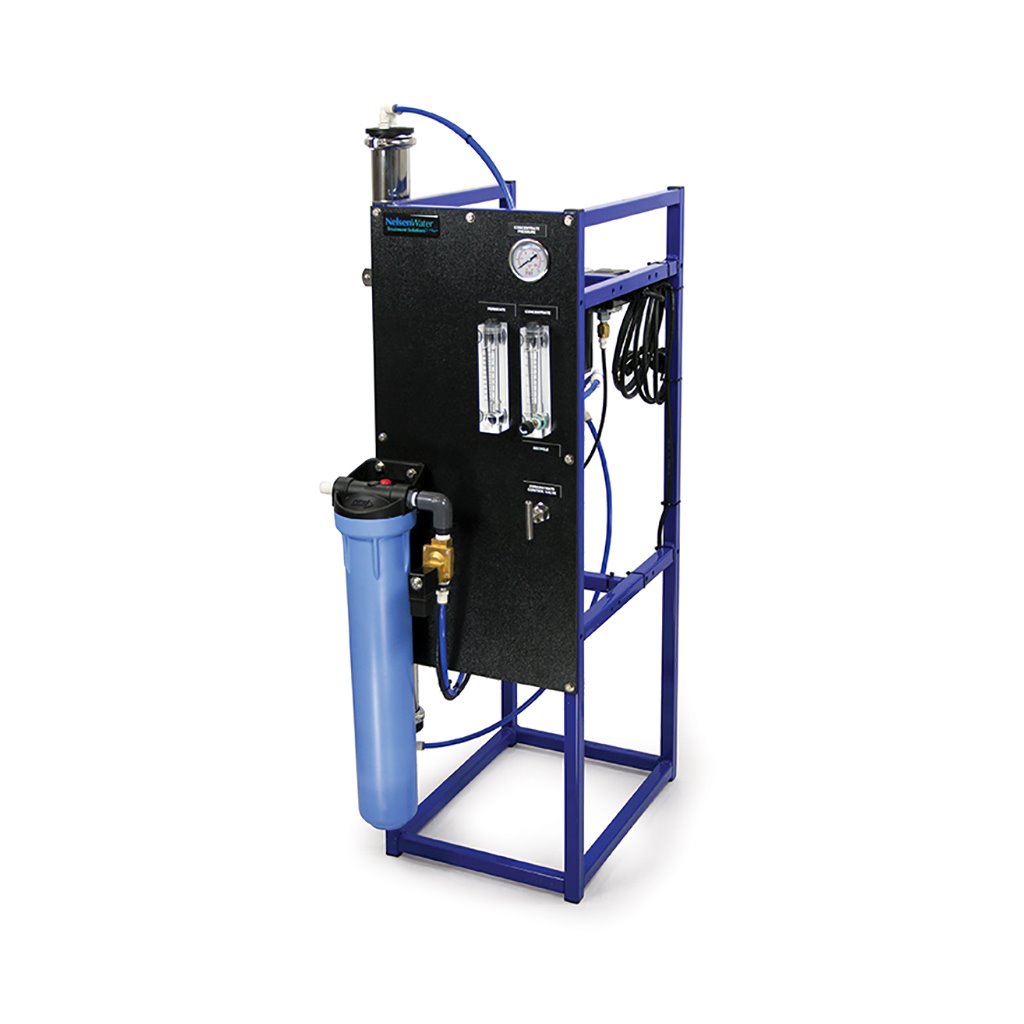
Nelsen - Commercial Series of Reverse Osmosis Systems
Nelsen offers may models with various options to suit your needs (more than shown on this site). These are great value systems that offer great quality at very reasonable pricing.
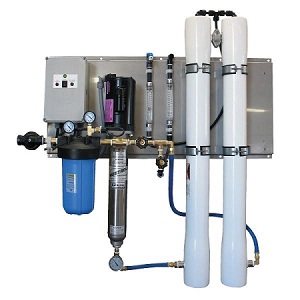
Watts - R4X40 RO Series
Watts Water Technologies is one of the largest OEM of water treatment and offer very high quality systems. The R4X40 series have a standard features like Non metallic recycle needle valve, stainless steel pressure vessel.
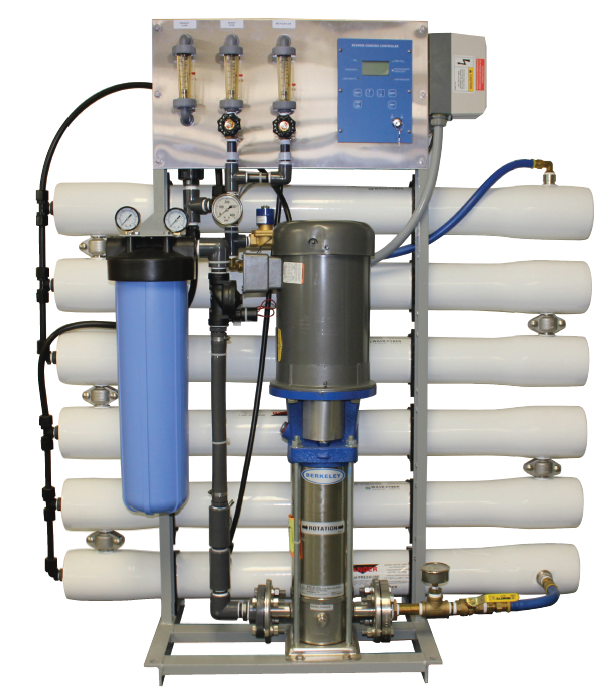
Heavy Duty Commercial R14 Floor Mount Series
R14 Floor Mount Series reverse osmosis for flow rates to 10,800 GPD with powder coated steel frame and FRP side-port pressure vessels.
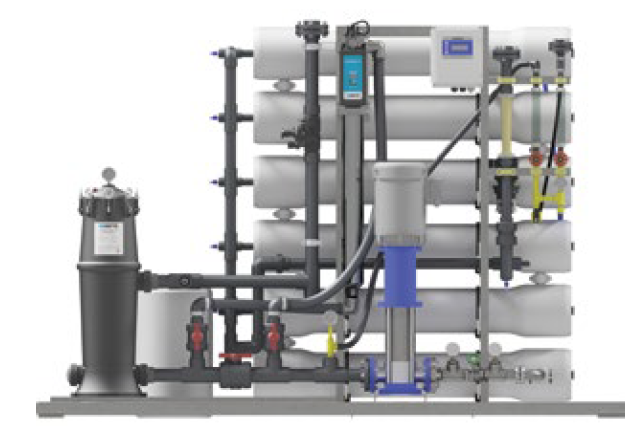
Heavy Duty Commercial R18 Series RO Systems
Heavy duty and fully assembled commercial RO systems for flow rates up to 30 GPM with powder coated steel frame and product water conductivity probe.
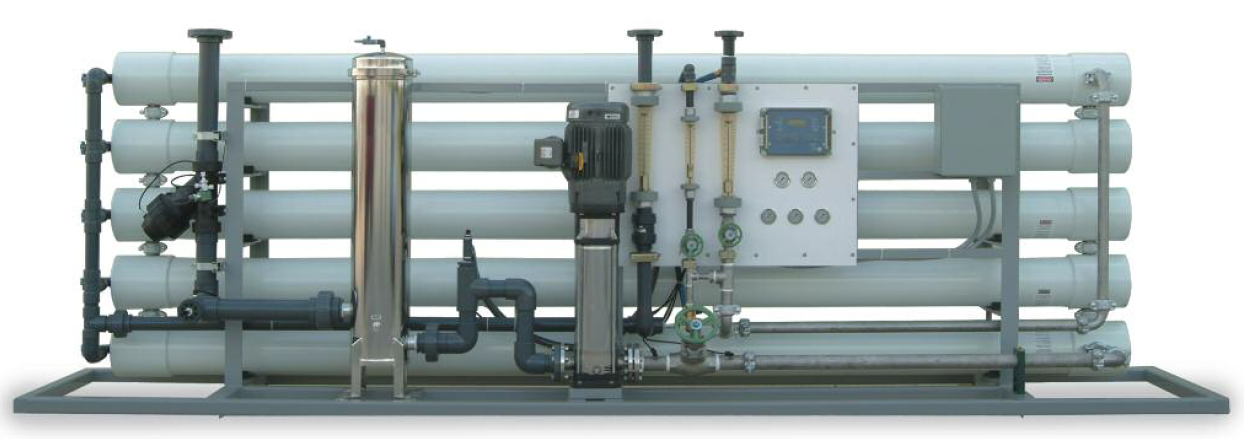
R48 Series Commercial RO Systems
R48 series commercial Reverse Osmosis systems for flow rates up to 100 GPM with automatic inlet valve and stainless steel pre-filter and cartridges.



